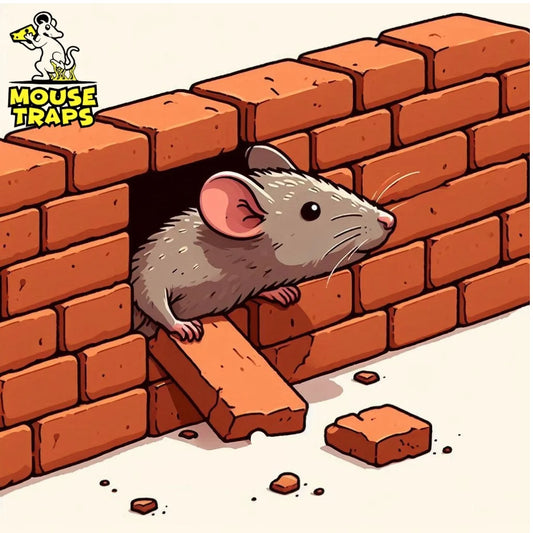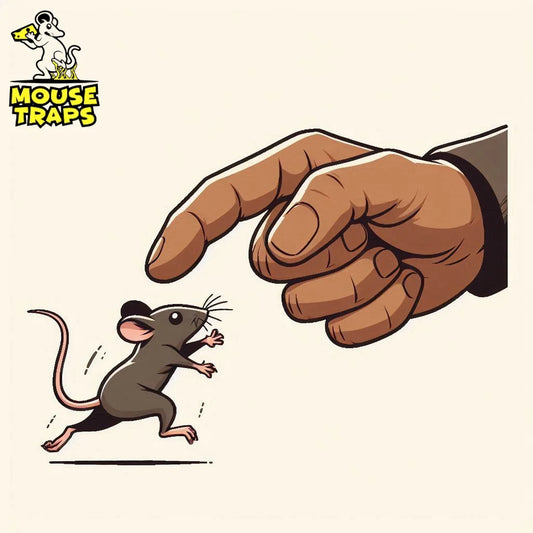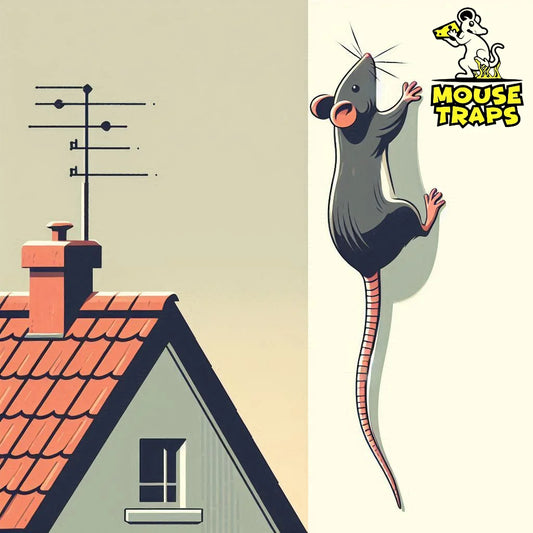Introduction:
Have you noticed that scratching sound coming from your attic lately? Or maybe you've seen droppings that look a little too big for your average house mouse? If so, you might have a rat problem on your hands. Unlike their smaller cousins, rats are agile climbers, and those seemingly innocent drainpipes lining your house are basically a personal Autobahn to them. But before you grab a box of cheese-laden traps, hold on! Those might not be the best weapons in this war.
Why Mouse Traps Won't Stop Rats?
While classic snap traps are perfectly suited for catching mice, they're woefully inadequate for their larger, more cunning brethren. Here's why:

- Size Matters: A standard snap trap is designed for mice, not the bulkier bodies of rats. They might trigger the trap without getting caught, or worse, get injured and escape, leaving you with a very unhappy (and potentially rabid) rodent still roaming free.
- Smarter Snacks: Rats are neophobic, meaning they're wary of new things. That once-tempting piece of cheese in a trap quickly becomes suspect after a near-death experience.
A Multi-Pronged Approach: How to Deal with Drainpipe-Scaling Rats?
So, how do you stop these furry Houdinis from using your house as their personal jungle gym? Here's a multi-pronged approach that combines exclusion, deterrents, and, when necessary, traps designed specifically for rats.
1. Seal Up the Fortress:
Look for any gaps, cracks, or loose fittings that could be acting as rat-sized stepping stones. Invest in galvanized steel mesh with a diameter of less than a quarter-inch. Secure it around the top of the drainpipe, creating a rat-proof barrier. Use weatherproof caulk to seal any small holes or gaps around pipes, soffits, and rooflines – potential entry points for these unwelcome guests.

2. Make Your Home Unappetizing:
Eliminate any potential food sources for rats. Store food in airtight containers, clear up crumbs, and keep your garbage cans sealed tightly. Don't give rats a leafy ladder! Keep bushes and shrubs trimmed away from your house to remove potential climbing aids. Sprinkle cayenne pepper or peppermint oil around potential entry points. The strong scent acts as a natural deterrent.

3. When Traps are Necessary:
Invest in heavy-duty Mouse traps specifically designed for rats. Place the traps strategically near suspected entry points and along runways where you've seen signs of rat activity. Unlike mice, rats are less enticed by cheese alone. Use a combination of peanut butter, bacon grease, or even pet food to tempt them. Empty and reset traps daily to maintain their effectiveness.

4. Consider Professional Help:
If your rat infestation seems overwhelming, or you're uncomfortable dealing with traps, don't hesitate to call in a professional pest control service. They have the expertise and tools to safely and effectively eliminate the problem.

Additional Tips:
- Eliminate Water Sources: A dripping tap or clogged gutters could create a water source that attracts rats. Make sure to repair any leaks and maintain drainage around your home.
- Patch Up Pet Doors: Even small pet doors can be an entry point for rats. If not in use, consider sealing them up.
- Seal Up Vents: Don't underestimate a rat's determination. Use wire mesh to cover any vents leading into your house.
FAQs:
Conclusion:
To sum up effectively managing a rat problem involves taking an approach that tackles prevention and eradication methods. Traditional mouse traps are often ineffective against rats due to their size and intelligence, necessitating the use of specialized traps and deterrents. By sealing off entryways getting rid of food attractants and strategically positioning traps homeowners can effectively decrease rat infestations in and, around their houses. However, for severe infestations or for those uncomfortable with handling traps, seeking professional pest control assistance is advisable. By putting in effort and using strategies you can take back your house from these guests and guarantee a rat free space for yourself and your loved ones.




